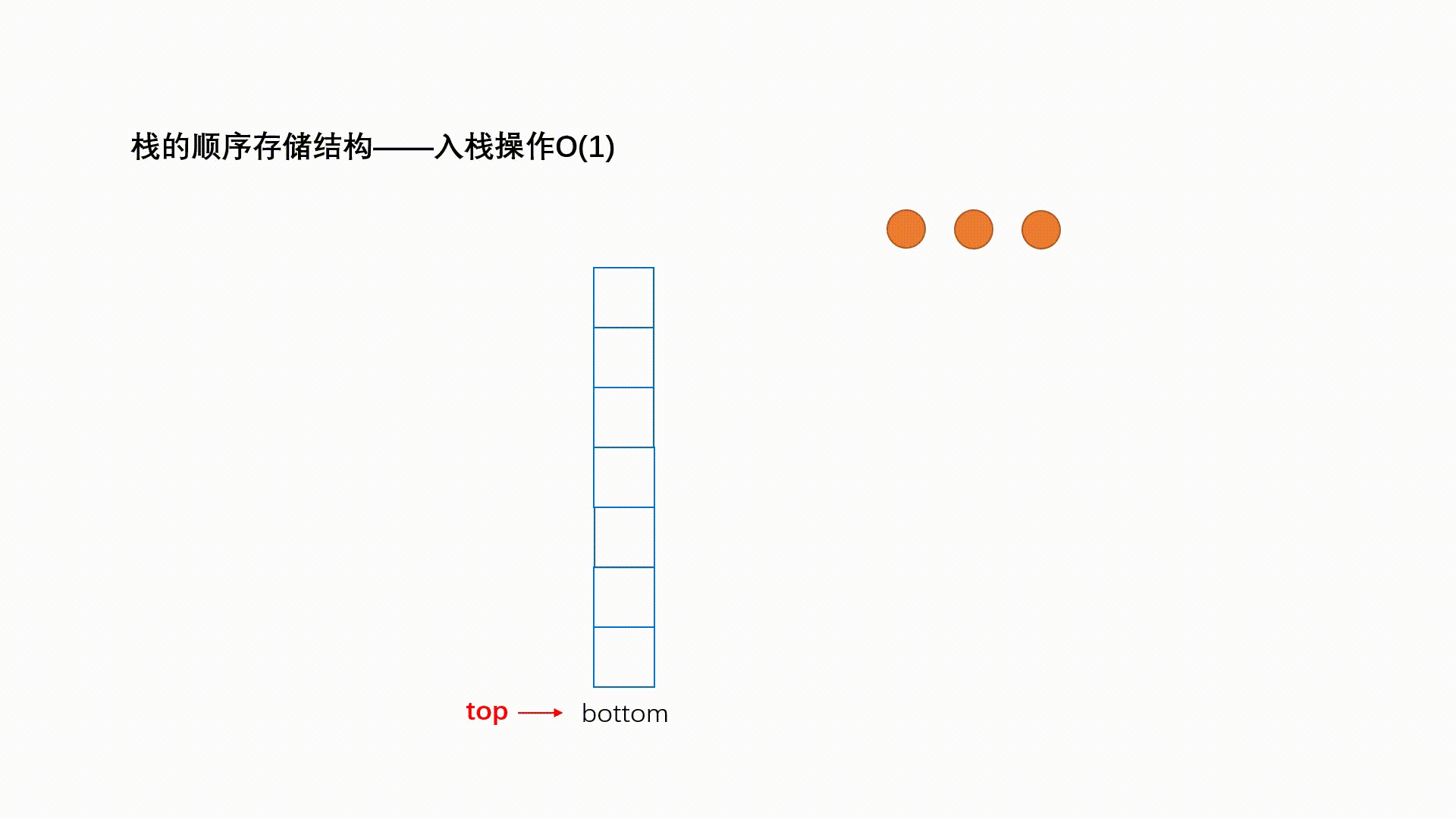文章目录
一、栈
1.栈的概念
栈是一种特殊的线性表,其只允许在固定的一端进行插入和删除元素操作。进行数据插入和删除操作的一端
称为栈顶(top),另一端称为栈底(bottom)。栈中的数据元素遵守后进先出LIFO(Last In First Out)的原则。
压栈:栈的插入操作叫做进栈/压栈/入栈,数据从栈顶进入。
出栈:栈的删除操作叫做出栈。出数据也在栈顶。
2.栈的物理图解


3.栈的代码实现
3.1 栈的结构
typedef int STDataType;
typedef struct Stack
{
STDataType* a;
int top;//栈顶
int capacity;//栈的容量
}ST;
3.2 接口
void STInit(ST* pst);//初始化栈
void STDestroy(ST* pst);//销毁栈
void STPush(ST* pst, STDataType x);//入栈
void STPop(ST* pst);//出栈
STDataType STTop(ST* pst);//获取栈顶元素
bool STEmpty(ST* pst);//判断栈是否为空
int STSize(ST* pst);//获取栈中有效元素个数
3.3 初始化
void STInit(ST* pst)
{
assert(pst);
pst->a = NULL;
//pst->top = -1 //top指向栈顶数据
pst->top = 0; // top 指向栈顶数据的下一个位置
pst->capacity = 0;
}
3.4 入栈
void STPush(ST* pst,STDataType x)
{
assert(pst);
if (pst->top == pst->capacity)
{
//若原内存大小为0,则新内存大小赋值为4,不为0则加倍
int newCapacity = pst->capacity == 0 ? 4 : pst->capacity * 2;
STDataType* tmp = realloc(pst->a, newCapacity * sizeof(STDataType));
if (tmp == NULL)
{
perror("realloc fail");
return;
}
pst->a = tmp;
pst->capacity = newCapacity;
}
pst->a[pst->top] = x;
pst->top++;
}
3.5 出栈
void STPop(ST* pst)
{
assert(pst);
assert(!STEmpty(pst));//断言栈不为空
pst->top--;
}
3.6 获取栈顶元素
STDataType STTop(ST* pst)
{
assert(pst);
assert(!STEmpty(pst));//断言栈不为空
return pst->a[pst->top-1];
//由于top初始化为0,故这里要top-1才能获取栈顶元素
}
3.7 判断栈是否为空
bool STEmpty(ST* pst)
{
assert(pst);
return pst->top == 0;
//在STInit函数中top初始化为0,若初始化为-1,则这里条件改为pst->top == -1
}
3.8 获取栈中有效元素个数
int STSize(ST* pst)
{
assert(pst);
return pst->top;
//若top初始化为-1,则这里的需写成top+1
}
3.9 销毁栈
void STDestroy(ST* pst)
{
assert(pst);
free(pst->a);
pst->a = NULL;//防止出现野指针
pst->top = pst->capacity = 0;
}
二、队列
1.队列的概念
队列:只允许在一端进行插入数据操作,在另一端进行删除数据操作的特殊线性表,队列具有先进先出
FIFO(First In First Out)
入队列:进行插入操作的一端称为队尾 (tail)
出队列:进行删除操作的一端称为队头(head)

2. 队列的物理图解

3. 队列的代码实现
3.1 队列的结构
typedef int QDataType;
typedef struct QueueNode
{
struct QueueNode* next;
QDataType data;
}QNode;
typedef struct Queue
{
QNode* phead;
QNode* ptail;
int size;
}Queue;
3.2 接口
void QueueInit(Queue*pq);//队列的初始化
void QueueDestroy(Queue* pq);//队列的销毁
void QueuePush(Queue* pq,QDataType x);//入队
void QueuePop(Queue* pq);//出队
QDataType QueueFront(Queue* pq);//获取队列的头部元素
QDataType QueueBack(Queue* pq);//获取队列的队尾元素
int QueueSize(Queue* pq);//获取队列中有效元素的个数
bool QueueEmpty(Queue* pq);//判断队列是否为空
3.3 队列的初始化
void QueueInit(Queue* pq)
{
assert(pq);
pq->phead = NULL;
pq->ptail = NULL;
pq->size = 0;
}
3.4 入队
void QueuePush(Queue* pq, QDataType x)
{
assert(pq);
QNode* newnode = malloc(sizeof(QNode));
if (newnode == NULL)
{
perror("malloc fail\n");
return;
}
newnode->data = x;
newnode->next = NULL;
if (pq->ptail == NULL)
{
assert(pq->phead == NULL);
pq->phead = pq->ptail = newnode;
}
else
{
pq->ptail->next = newnode;
pq->ptail = newnode;
}
pq->size++;
}
3.5 出队
void QueuePop(Queue* pq)
{
assert(pq);
assert(!QueueEmpty(pq));
//1.一个节点
if (pq->phead->next == NULL)
{
free(pq->phead);
pq->phead = pq->ptail = NULL;
}
//2.多个节点
else
{
QNode* next = pq->phead->next;
free(pq->phead);
pq->phead = next;
}
pq->size--;
}
3.6 获取队列头部元素
QDataType QueueFront(Queue* pq)
{
assert(pq);
assert(!QueueEmpty(pq));
return pq->phead->data;
}
3.7 获取队列尾部元素
QDataType QueueBack(Queue* pq)
{
assert(pq);
assert(!QueueEmpty(pq));
return pq->ptail->data;
}
3.8 获取队列中有效元素的个数
int QueueSize(Queue* pq)
{
assert(pq);
return pq->size;
}
3.9 判断队列是否为空
bool QueueEmpty(Queue* pq)
{
assert(pq);
return pq->phead == NULL
&& pq->ptail == NULL;
}
3.10 销毁队列
void QueueDestroy(Queue* pq)
{
assert(pq);
QNode* cur = pq->phead;
while (cur)
{
QNode* next = cur->next;
free(cur);
cur = next;
}
pq->phead = pq->ptail = NULL;
pq->size = 0;
}





















 2313
2313











 被折叠的 条评论
为什么被折叠?
被折叠的 条评论
为什么被折叠?








